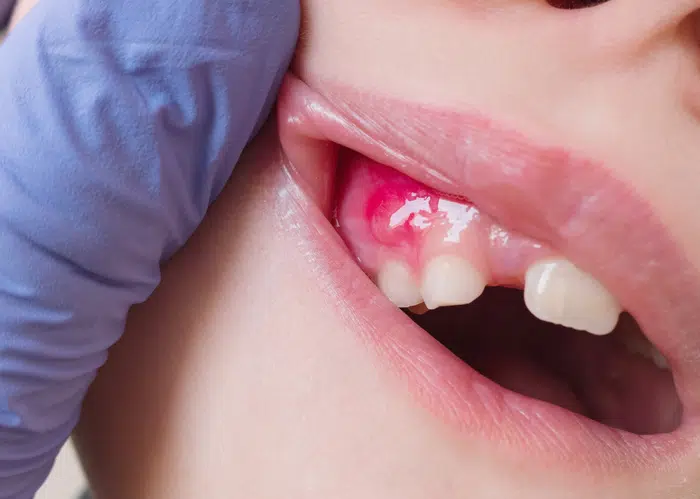
Gum abscesses can be painful and even dangerous. Luckily, they are easily treatable, as long as you seek help from your dentist.
If you’ve noticed a loose tooth, a receding gum line, increased tooth sensitivity, pus discharge, or a lump, swelling, redness, bleeding, or pain in your gums, you might have a gum abscess. While gum abscesses can be painful, they are easily treatable if you recognize the signs early and get professional treatment.
The Basics About Gum Abscesses
When you have an infection, your blood vessels in the area may leak and cause swelling. Your body then sends white blood cells to the affected area to combat the bacteria. If an infection occurs in your gums, you may develop a pus-filled pocket of tissue (an abscess) on your gums or in the area between your teeth and gums.
Often caused by lodged pieces of food, gingival abscesses only affect the marginal gingiva, or the part of your gums that surrounds your teeth. However, periodontal abscesses occur in the tissues surrounding your periodontal pocket and can damage your periodontal ligament or alveolar bone. Periodontal disease — often caused by poor oral hygiene, plaque accumulation, and risk factors like arthritis, heart disease, diabetes, hepatitis C, obesity, and genetics — is a common culprit behind periodontal abscesses.
If left untreated, the infection can spread deeper into your gum tissue, affecting nearby teeth and bones and resulting in more pain and swelling. The infection can even enter the bloodstream, causing sepsis, a life-threatening complication.
Treating Gum Abscesses
To prevent gum abscesses from developing in the first place, brush and floss daily. This will reduce plaque accumulation on or between your teeth and beneath your gum line. However, if you do develop a gum abscess, you’ll need to visit a dentist for treatment. Not only will they be able to remove any food particles or foreign objects lodged in your gums, but they will also be able to safely drain the abscess and prevent the infection from spreading to other areas.
Your dentist will make a carefully placed incision to drain the abscess. If you have a gingival abscess, your dentist will cut through the most swollen section of your gums. Once the abscess is open, your dentist will apply pressure to the infected area to ensure the pus is properly drained. If you have a periodontal abscess, your dentist will insteadl make the incision through your periodontal pocket and may rinse it to remove bacteria and dead gum tissue. Your dentist may also suggest scaling and root planing to remove plaque and tartar from beneath your gum line.
After draining your abscess, your dentist will likely give you antibiotics to combat the infection and reduce the likelihood of bacteria reinfecting the area. If necessary, you can take an over-the-counter pain reliever and rinse with warm salt water to reduce swelling.
Afterward, your dentist may request an X-ray of the area to determine if you’ve suffered any bone loss as a result of your infection. If the X-ray reveals that you have lost some bone, they may recommend gum tissue and bone regeneration procedures, such as grafting. If the harmful bacteria from your gum abscess has spread to your dental pulp, you may need a root canal or extraction.
Treating Gum Abscesses With Espire
If you’ve noticed any signs of a gum abscess, schedule an appointment with your dentist ASAP. Even if you haven’t, you should still schedule regular appointments with your dentist for routine check-up and cleaning.
At Espire, our dentists are trained to catch any signs of gum abscesses or other potential problems early so you can keep your gums and smile healthy. Contact us today to schedule an appointment!


